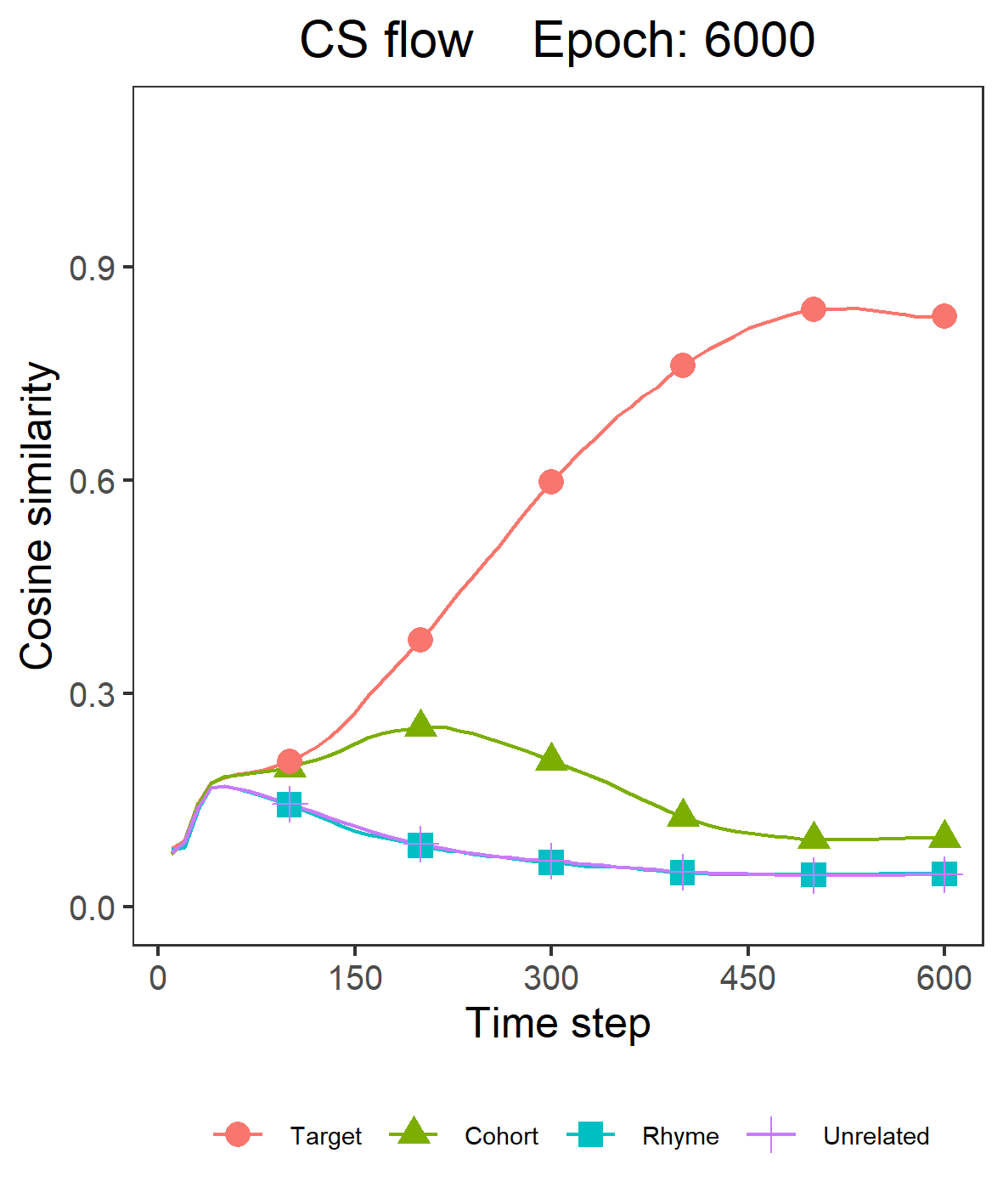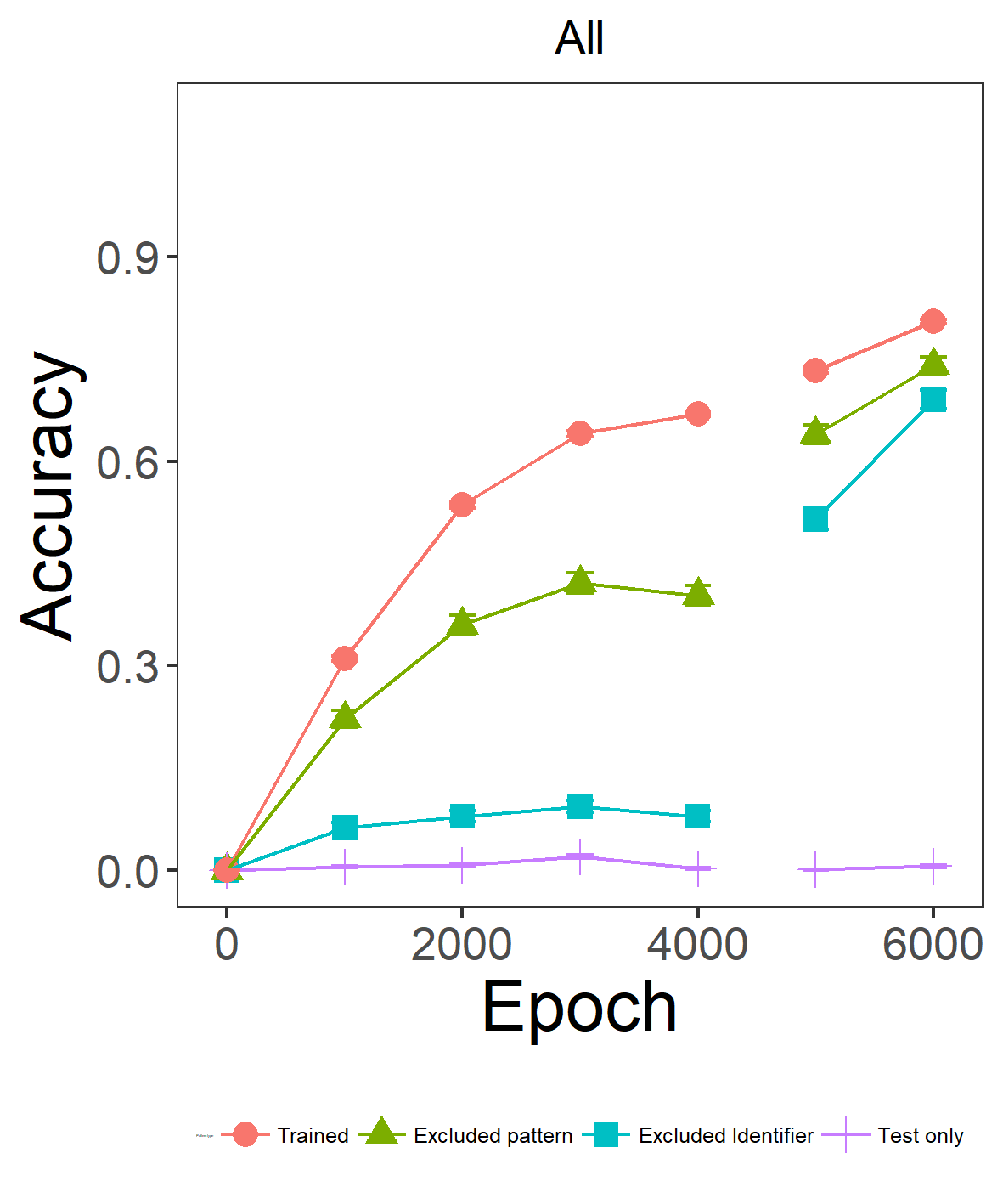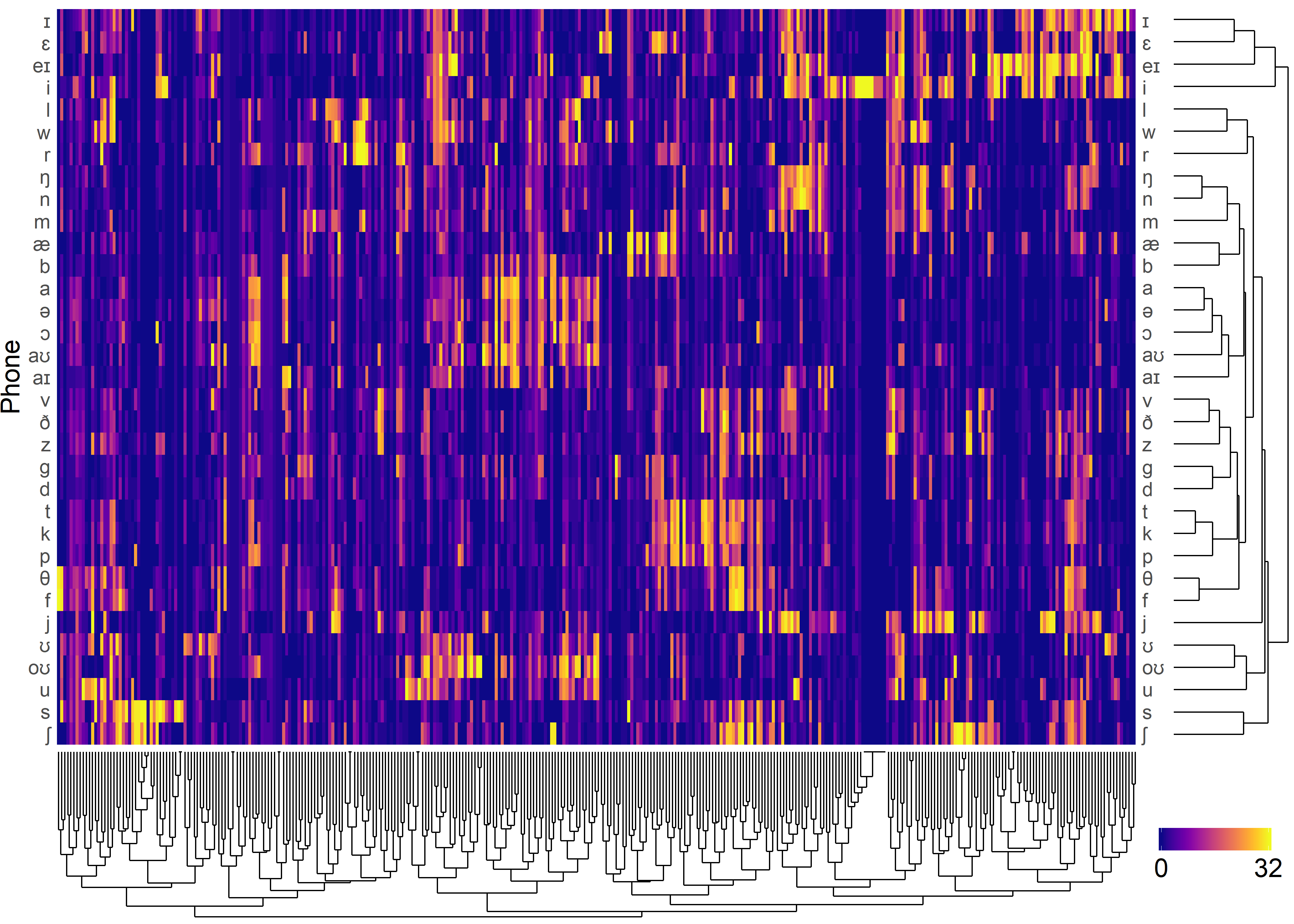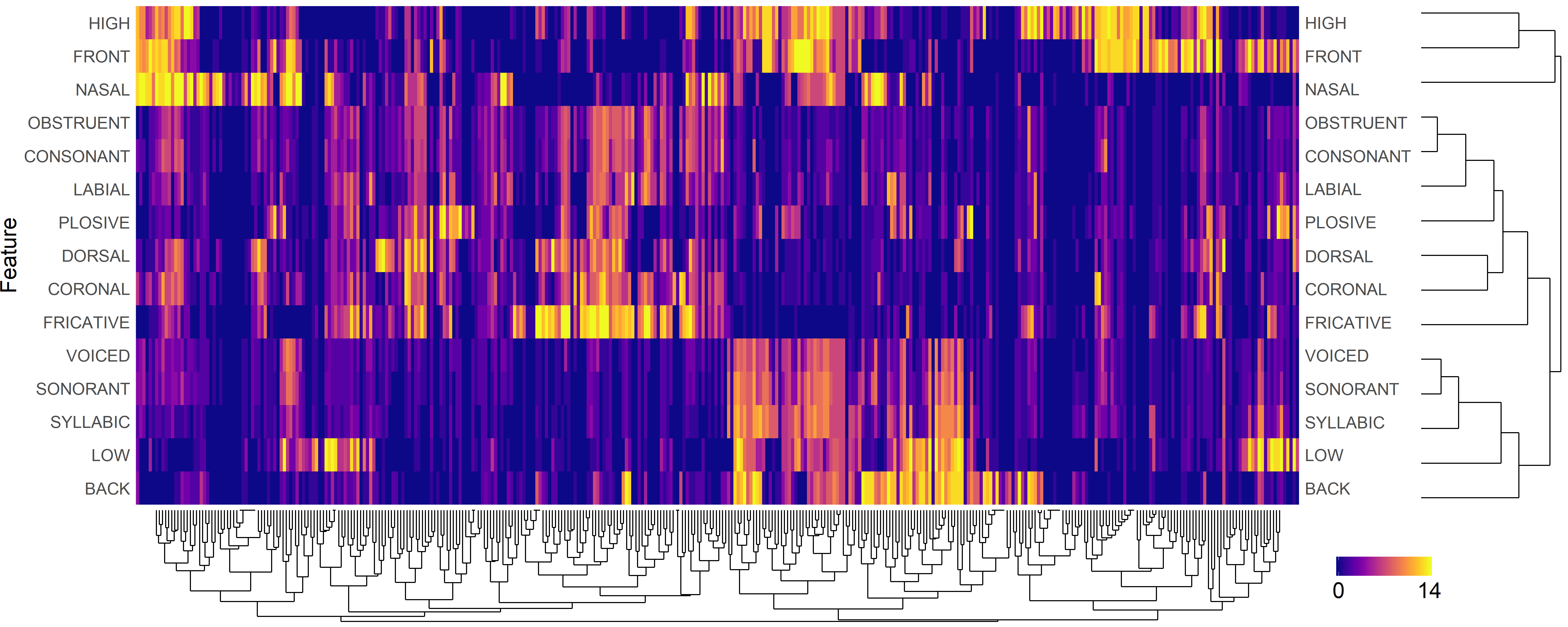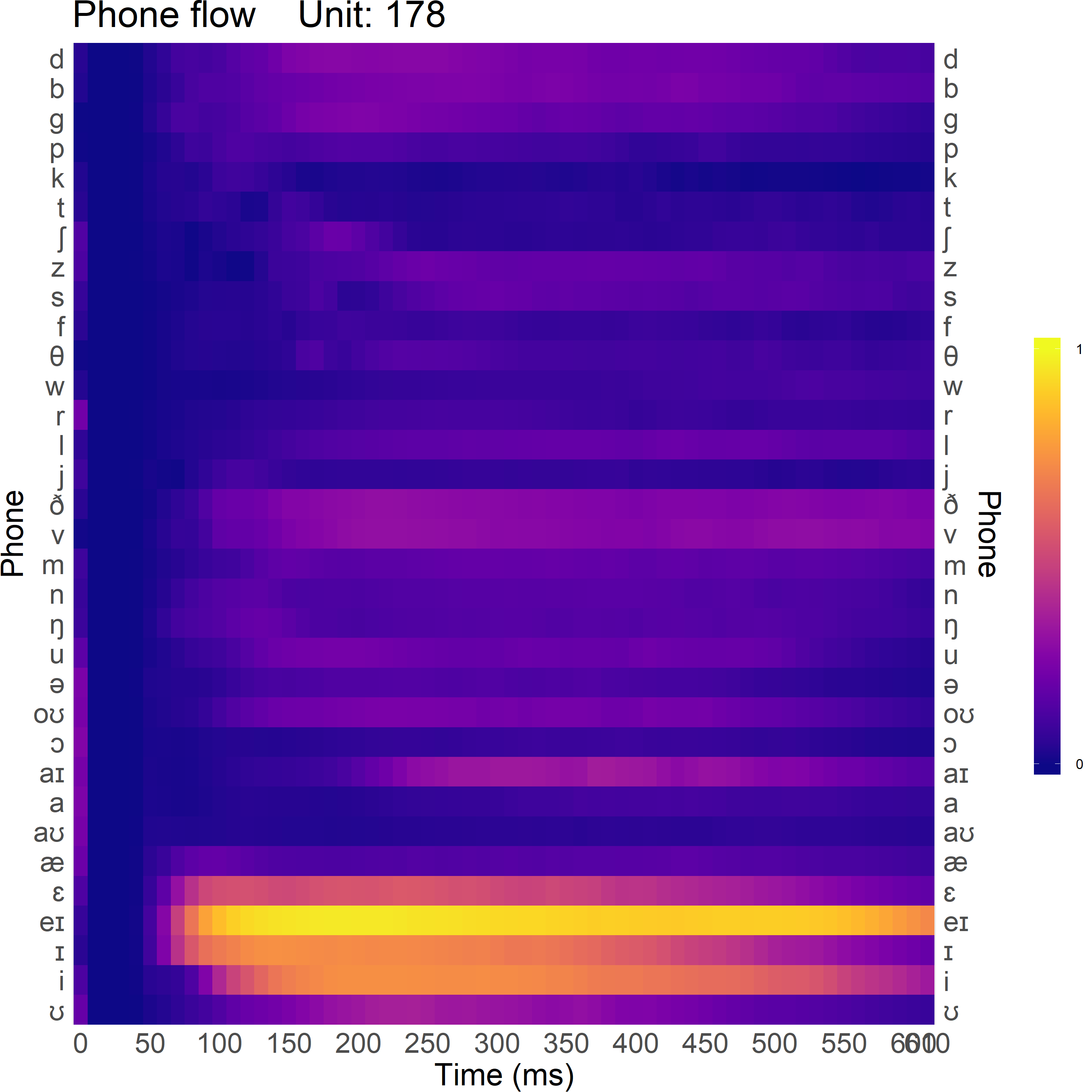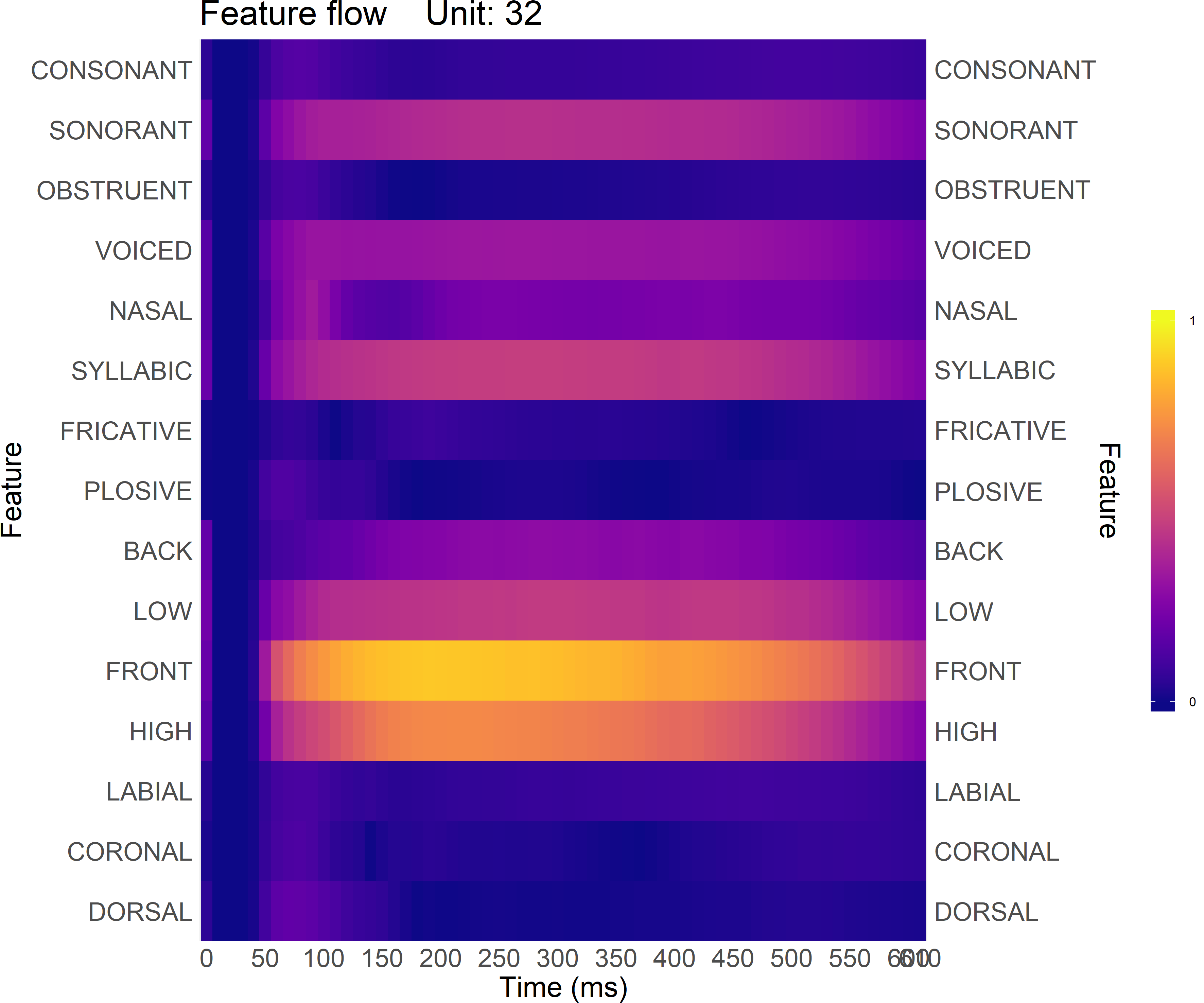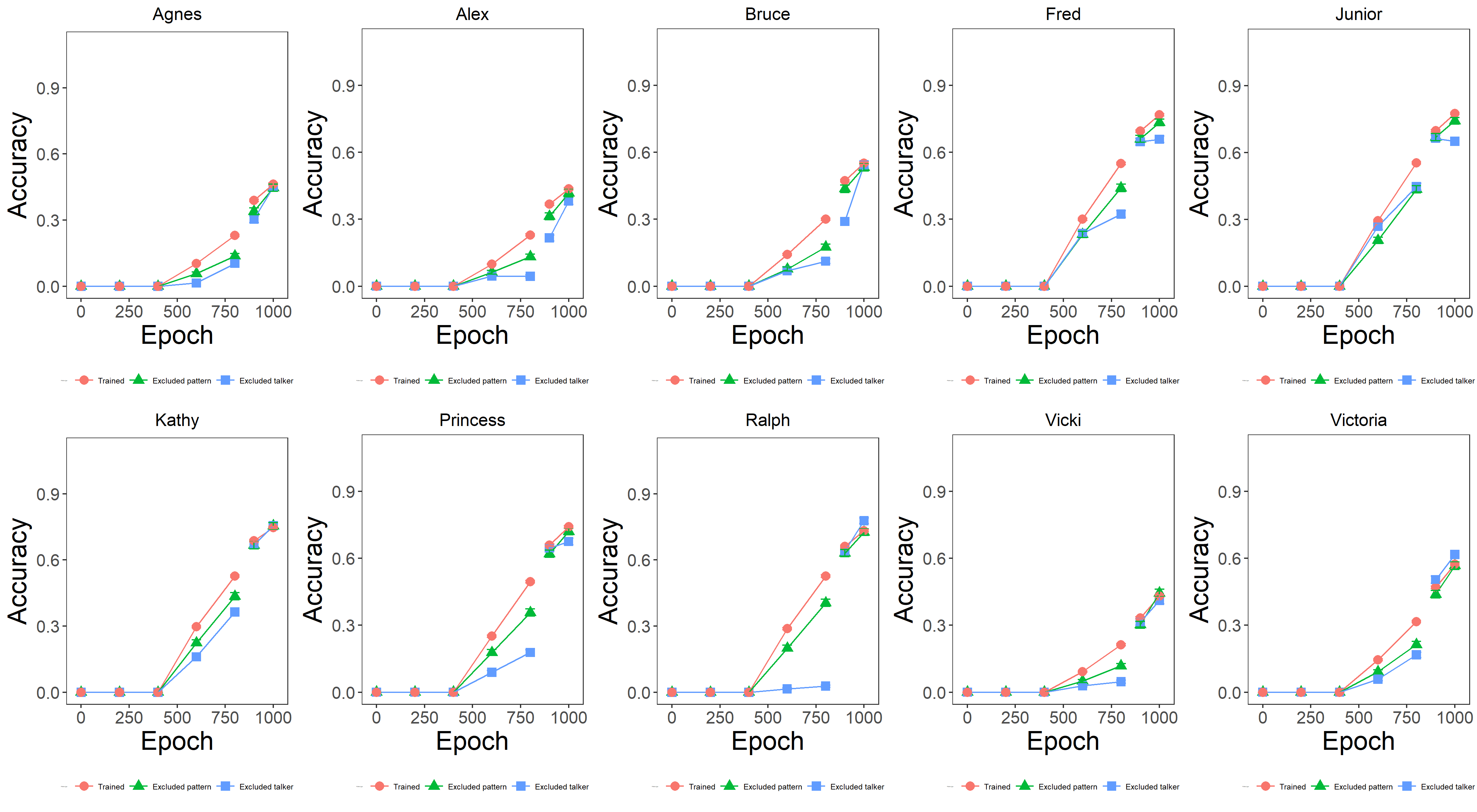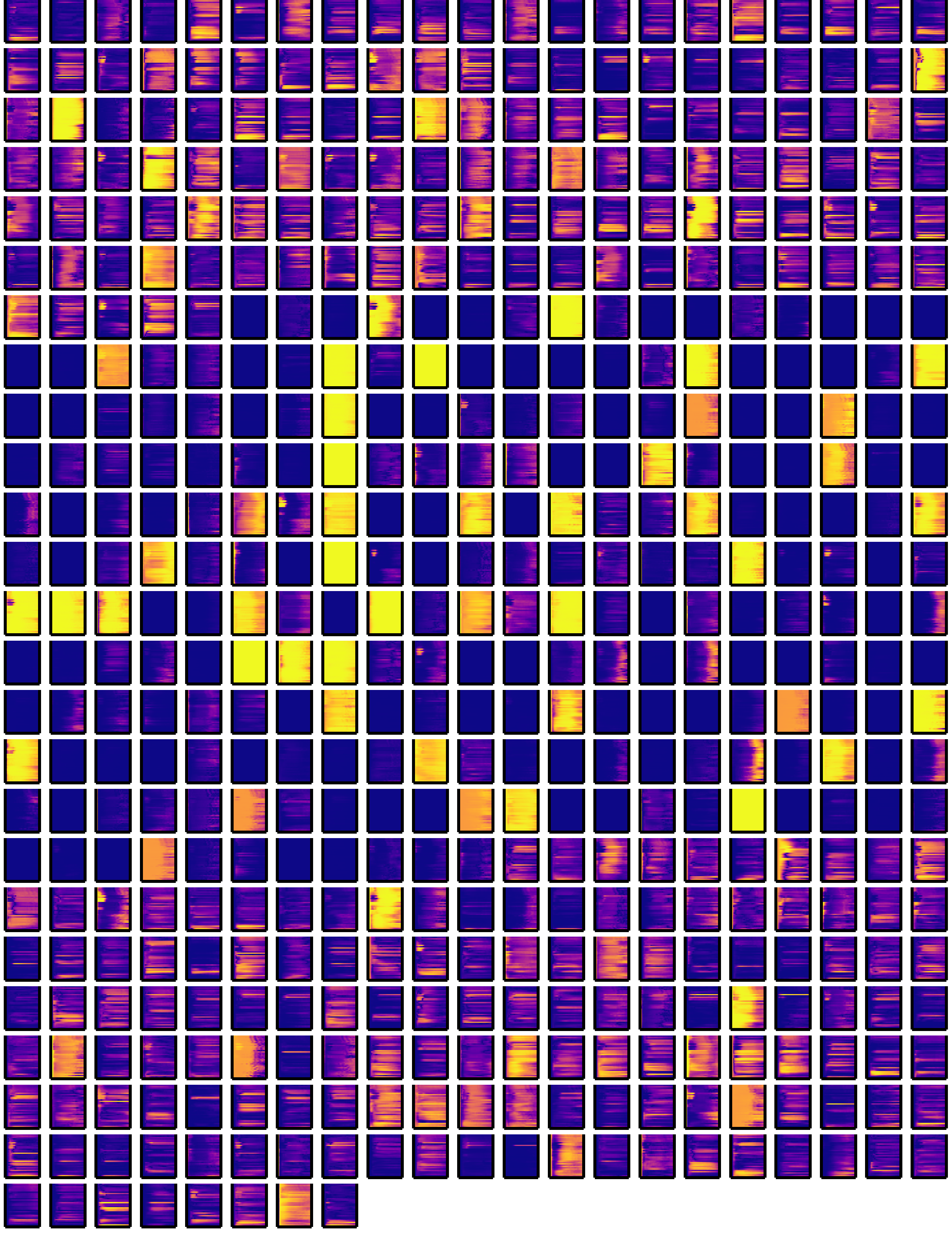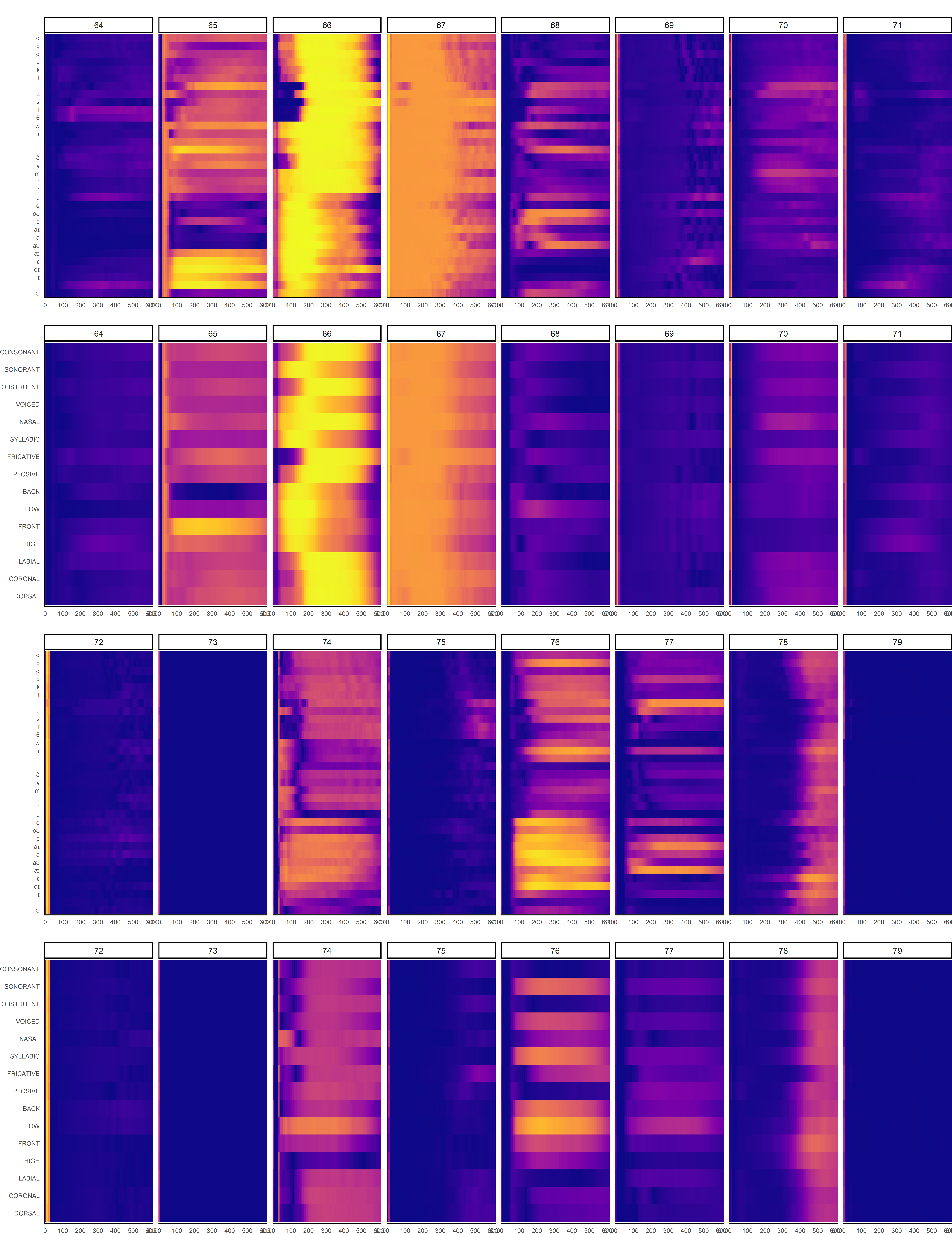EARShot_TF2
The EARShot model on Tensorflow 2
- TensorFlow 1 version link:
Paper
Magnuson, J.S., You, H., Luthra, S., Li, M., Nam, H., Escabí, M., Brown, K., Allopenna, P.D., Theodore, R.M., Monto, N., & Rueckl, J.G. (2020). EARSHOT: A minimal neural network model of incremental human speech recognition. Cognitive Science, 44, e12823. http://dx.doi.org/10.1111/cogs.12823 -- PDF -- Supplmentary materials
Requiremet
- Tensorflow >=2.2.0rc4
- Librosa >= 0.7.0
- FFMPEG
Structure
Dataset
Wavfiles for acoustic pattern
Hyper parameters
-
Pattern
-
Lexicon_File
- List of words to use
- Please see the example: 'ELP_groupData.csv'
-
Wav_Path
- The path of wav files for generating dataset
-
Pattern_Path
- The path of generated dataset
-
Metadata_File
- The metadata file name.
- Default is 'METADATA.PICKLE'
-
Acoutsic
- Mode
- Determine which type of acoustic pattern use.
- 'Spectrogram' or 'Mel'
- Spectrogram
- This parameters are used only
Mode==Spectrogram - Sample_Rate
- Dimension
- Frame_Length
- Frame_Shift
- This parameters are used only
- Mel
- This parameters are used only
Mode==Mel- Sample_Rate
- Spectrogram_Dim
- Mel_Dim
- Frame_Length
- Frame_Shift
- Max_Abs
- If a positive float, pattern is symetric
-Max_AbstoMax_Abs - If 'null', non symmetric '0 to 1'.
- If a positive float, pattern is symetric
- This parameters are used only
- Mode
-
Semantic
- Mode
- Determine which type of semantic pattern use.
- 'SRV' or 'PGD'
- SRV
- This parameters are used only
Semantic_Mode==SRV - Size
- Determine the size of pattern
- Assign_Number
- Determine How many units have 1. Other units have 0.
- This parameters are used only
- PGD
- This parameters are used only
Semantic_Mode==PGD - Size
- Determine the size of pattern
- Dict_File_Path
- The path of
pre generated dictpickle file.
- The path of
- This parameters are used only
- Mode
-
-
Hidden_Analysis
- Diphone_Wav_Path
- diphone wav directory to be used for hidden analysis
- This parameter is required.
- Ex.
./Diphone_Wav
- Phoneme_Feature
- Phones to be used during hidden analysis and feature information of each phone
- Sensitive_Index
- Criteria
- In PSI and FSI, threshould criteria range
- Step range
- In PSI and FSI, Time range to be included in the calculation of average activation value
- Criteria
- Only_All
- When
true, only the flow, PSI, and FSI based on all identifier mean are calculated.
- When
- Diphone_Wav_Path
-
Model
-
Prenet_Conv
- Channels, Kernel sizes, and strides must be lists of the same size.
- Use
- If
true, model uses prenet. - If
false, the sub-parameters of 'Prenet_Conv' will be ignored.
- If
- Channels
- Determine the number of filters in each convolution.
- Ex: [512, 512, 512]
- Kernel_Sizes
- Determine the kernel size for each convolution.
- Ex: [5, 5, 5],
- Strides
- Determine the stride size for each convolution.
- Changing this value affects the number of time steps.
- Ex: [1, 1, 1]
- Use_Batch_Normalization
- If true, model applies batch normalization after convolution.
- Dropout_Rate
- Determine a dropout rate during training.
- *If 'None', there is no dropout. }),
-
Hidden
- Type
- Determine which type of RNN use.
- 'LSTM', 'GRU', 'BPTT'
- Size
- Determine RNN cell's size
- No_Reset_State
- When
true, initial hidden state of each training is the last hidden state of previous training. - When
false, initial hidden state of each training is a zero vector.
- When
- Type
-
-
Train
- Use_Pattern_Cache
- When
true, trained patterns are stored in memory, the next pattern generate can proceed quickly. - This setting improves speed, but if the pattern is stored on an SSD, the effect may not be significant.
- An error may occur when the number of patterns being learned is excessively greater than the simulation's permissible environment
- When
- Batch_Size
- Determine the batch size during learning.
- When Out of memory occurs, decrease according to the environment(GPU memory).
- Learning_Rate
- Use_Noam
- When
true, noam decay is applied to learning rate. - When
false, learning rate is fixed to initial value.
- When
- Initial
- Determine the initial learning rate.
- A positive float is required.
- Warmup_Step
- Determin the warm-up step of noam decay
- Only used when
Use_Noamistrue.
- Min
- Determine the minium learning rate.
- A positive float is required.
- Use_Noam
- ADAM
- Set ADAM optimizer parameters.
- Test_Only_Identifier_List
- Determines which talkers are always excluded regardless of the exclusion mode.
- If nothing,
[] - Ex: ['EO', 'JM'] or
[]
- Max_Epoch_with_Exclusion
- Apply 'Exclusion_Mode' and learn to set epoch.
- Max_Epoch_without_Exclusion
- From 'Max_Epoch_with_Exclusion' to the set epoch, 'Exclusion_Mode' is ignored and learned.
- This is the parameter used to over-training all patterns after normal training.
- This parameter must bigger than 'Max_Epoch_with_Exclusion'.
- Max_Queue
- Determines the maximum size of queue saving the next training pattern
- Exclusion_Mode
- Set pattern exclusion method. You can choose between P (pattern based), T (talker based), or M (mix based).
- If set to P, 1/10 of each talker pattern will not be trained.
- When set to T, all patterns of one talker are excluded from the learning. The talker can be set via the 'et' parameter.
- When set to M, patterns are excluded as a mixture of the two methods.
- When set to None, all patterns will be learned.
- Checkpoint_Timing
- Determine the frequency of the checkpoint saving during learning
- A positive integer is required.
- Test_Timing
- Determine the frequency of the inference during learning.
- A positive integer is required.
- Use_Pattern_Cache
-
Result_Path
- Determine result and checkpoint save path
-
Device
- Determine which GPU is used.
- When
-1, CPU only model is turned on.
Pattern generate
Command
python Pattern_Generator.py
-
In some cases, you may want to construct a subset using only specific words or specific identifiers.
-
A subset of word or identifier can be formed through the following method.
- In
pythonoripython, type the following command:
from Pattern_Generator import Metadata_Subset_Generate- Set subset.
identifier_List = ["Agnes", "Alex", "Bruce", "Fred", "Junior", "Kathy", "Princess", "Ralph", "Vicki", "Victoria"]- Type following command:
Metadata_Subset_Generate( word_List= None, identifier_List= identifier_List, metadata_File_Name = 'METADATA.SUBSET.PICKLE' )- If all words or identifiers are used, the list is set to
None.
- Modify the
Metadata_Fileparameter to subset metdata file name in Hyper_Parameter.json
- In
Model run
python Model.py [parameters]
Parameters
-
-se <int>- Set the model's start epoch. This parameter and the 'mf' parameter must be set when loading a previously learned model.
- The default value is 0.
-
-ei <talker>- Set which identifier pattern is excluded from the learning.
- Applies if
Exclusion_Modeparameter in Hyper_Parameter.json is T or M, otherwise this parameter is ignored.
-
-d <path>- Determine the path of result and checkpoint.
- The path is generated as a sub directory in the
Result_Path.
Result analysis
Command
python Analyzer.py [parameters]
Parameters
-
-d <path>- Results directory to run the analysis on.
- This parameter is required.
-
-a <float>- Criterion in reaction time calculation of absolute method.
- The default is 0.7.
-
-r <float>- Criterion in reaction time calculation of relative method.
- The default is 0.05.
-
-tw <int>- Width criterion in reaction time calculation of time dependent method used in the paper.
- The default is 10.
-
-th <float>- Height criterion in reaction time calculation of time dependent method used in the paper.
- The default is 0.05.
Execution examples
python Analyzer.py -d JUNIOR.IDX0
python Analyzer.py -d AGNES.IDX2 -tw 5 -th 0.1
Hidden analysis - Diphone based
Command
python Hidden_Analyzer.py [parameters]
Parameters
-
-d <path>- Results directory to run the analysis on.
- This parameter is required.
-
-e <int>- The epoch to run the analysis on.
- This parameter is required.
Execution examples
python Hidden_Analyzer.py -d AGNES.IDX2 -e 8000
RSA analysis
Command
python RSA_Analyzer.py [parameters]
- To use RSA analyzer, the phoneme-feature file in hyper parameter must be set to Phoneme_Feature.Paper.txt
- It is to maintain compatiblity with human data (Mesgarani et al. 2013).
Parameters
-
-d <path>- Results directory to run the analysis on.
- This parameter is required.
-
-c <float>- Criterion of the PSI and FSI map to be used.
-
-pn <int>- Number of permutation tests
- The default is 100000.
Execution examples
python RSA_Analyzer.py -d VICKI.IDX2 -c 0.10 -pn 10000
Generate figures by R script
Accuracy and cosine similarity flow
Method
-
Use
./R_Script/Acc_and_CS_Flow(Fig.3).R -
Modify the parameters
-
Run. The result will be in
base_Dir.
Result example
PSI and FSI
Method
-
Use
./R_Script/PSI_and_FSI(Fig.4).R -
Modify the parameters
-
Run. The result will be in each talker's hidden analysis directory.
Result example
RSA permutation test
Method
-
Use
./R_Script/RSA_Permutation_Test(Fig.5).R -
Modify the parameters
-
Run. The result will be in each talker's hidden analysis directory.
Result example
Phoneme and feature flow
Method
-
Use
./R_Script/Phoneme_and_Feature_Flow(Fig.6).R -
Modify the parameters
-
Run. The result will be in each talker's hidden analysis directory.
Result example
Accuracy flow integration by talker
This is different 'Accuracy and cosine similarity flow'. This analysis checks the accuracy of the talker's data in all simulations.
Method
-
Use
./R_Script/Acc_Flow_Integration_by_Talker(Fig.S2.1).R -
Modify the parameters
-
Run. The result will be in
base_Dir.
Result example
Phoneme and feature flow tile
Method
-
Use
./R_Script/Phoneme_and_Feature_Flow_All_Tile(Fig.S2.2-3).R -
Modify the parameters
-
Run. The result will be in each talker's hidden analysis directory.
Result example
Phoneme and feature flow compare
Method
-
Use
./R_Script/Phoneme_and_Feature_Flow_Compare(Fig.S2.4).R -
Modify the parameters
-
Run. The result will be in each talker's hidden analysis directory.

